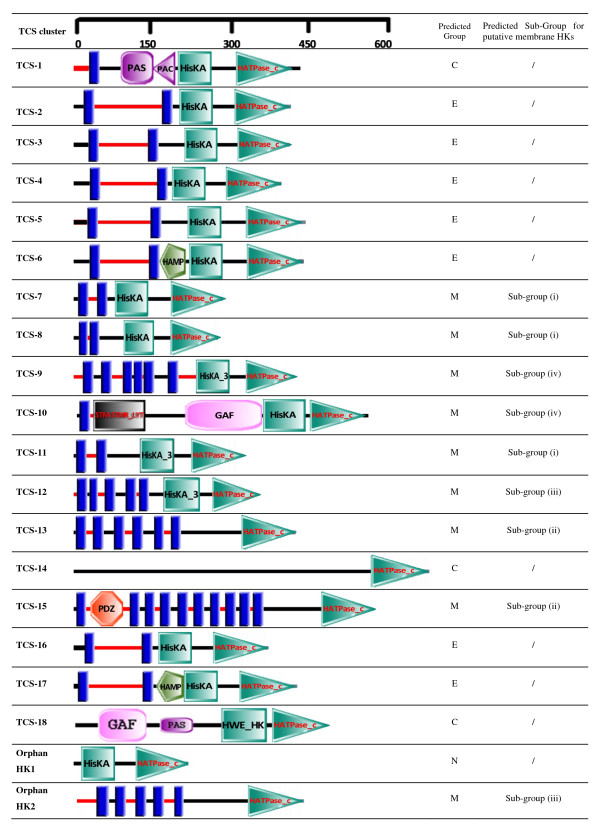Figure 3.
Domain architectures of histidine kinases representative of each TCS clusters. The pictorial depiction is based on the predictions carried out using the SMART web interface http://smart.embl-heidelberg.de/ with small manual modifications. The transmembrane helices (TMs), represented by blue bars, and the cellular localization of the linker regions between the helices were predicted using the tool TMHMM [16]. Red and black horizontal lines depict extracytoplasmic and cytoplasmic regions, respectively. The locations of the conserved domains within the protein sequences are represented by the labeled symbols. Domain definitions are according to Pfam http://pfam.sanger.ac.uk: HAMP, linker domain presenting in histidine kinase, adenylyl cyclases, methyl binding proteins and phosphatases (PF00672); HisKA, dimerisation/phosphoacceptor domain of histidine kinase (PF00512); HATPase_c, HK-type ATPase catalytic domain (PF02518); HisKA_2, dimerisation/phosphoacceptor domain of a sub-family of histidine kinases (PF07568); HisKA_3, dimerisation/phosphoacceptor domain of a sub-family of histidine kinases (PF07730);; PAS, signal sensor domain (PF00989); PAC (PF00785), a motif often found at the C-terminal side of the PAS domain and proposed to contribute to the PAS domain fold, GAF, cytoplasmic signaling domain (PF01590); PDZ, also known as DHR or GLGF (PF00595), a signal sensor domain of diverse functional specificities. All other abbreviations are referred to in Table 2 and Table 3. C, E and M stand for cytoplasmic, extracytoplasmic and membrane sensing, respectively; N denotes no sensing mechanism could be predicted due to either the complete absence or a truncation of the predicted sensory domain.

